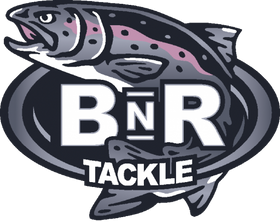Worm Rigging
Steelhead worms are an effective bait for targeting summer and winter run steelhead. The worms are especially useful in targeting bigger steelhead as the larger profile of the worm can be just the thing to trigger a strike. Worms can be presented in a number of different ways, for this tutorial we will be focusing on worm/jig and worm drift fishing techniques.
Float Fishing with Worms
Steelhead worms are fished under floats by threading the worm onto a jig head and suspending the worm/jig under a float. The float can be either fixed or sliding. For water deeper than 4’ or especially turbulent water a sliding float with an inline sinker is recommended. For water less than 4” deep a fixed float that is matched to the weight of the jig/worm is recommended.
Rods/Reels/Line
Standard spinning rods for float fishing worms are 9’ to 10’ in length, 8-15lb with a medium action. Reels are 2000 to 3000 series spinning reels capable of carrying 150 yards or more of 30 lb. braided line. Braided line line that floats well and is easy to mend is recommended for this technique For leaders 10 to 15 lb. monofilament is recommended.
Floats/Weights
Tapered cigar style foam, balsa or polystyrene sliding floats are recommended for sliding floats. Bobber sizes to balance at ¼ oz to ½ oz weight. Preferred weights are in-line weights in either the round or cylinder shape. For fixed floats the ¼ to ⅛ ounce balsa floats are a good choice.

Worm Color/length
Selection of worm color and length is based on the water conditions and amount of pressure the fish have seen. Lower, clearer water and more pressure require colors that are subtle like Nightmare, Low Flow and Black Better in 3.5” lengths. Higher, greener water lends itself to colors like BigFoot Canyon, Pearl Pink and First Cast in 5” lengths.
Presentation
Float fishing with worms is an excellent technique for boulder pockets and smaller confined holes. The jig/worm falls into the strike zone quickly and is a stealthy approach in small water. The depth of the jig should be set to 1’ to 1.5’ above the bottom. It is very important to present the float with a drag free drift. Meaning that the float is drifting downstream as if the main line was not attached at all. This allows the worm/jig to be presented in the most natural way to the fish.
|
Table 1: Worm Rigging Options Float Fishing |
|
| Rod Size/Type | 9’ to 10’, 8-15 lb., fast action spinning |
| Reel Size/Type | 2000 to 3000 series spinning reels capable of carrying 150 yards of braided line |
| Line | 25 to 50 lb. braided line |
| Leader Length | 2’ to 3’ |
| Leader Size | Steelhead: 10 to 15 lb. |
| Jig/Worm |
1/8th to ¼ oz WormKeeper Jig 3” to 5” Steelhead Worm |

Drift Fishing Worms
Drift fishing worms can result in very violent strikes from angry steelhead. This aggressive reaction can make this technique well worth the patience to learn. This technique is often used to medium to larger-sized rivers in bigger sprawling holes. The large profile of a drifted worm can be very effective at eliciting a strike from the biggest fish in the hole.
Rods/Reels/Line
Standard spinning or casting rods for drift fishing worms are 9’ to 10’ in length, 10-20lb with a medium action. Reels are 2000 to 3000 series spinning or casting reels capable of carrying 150 yards or more of 15 to 20 lb. monofilament line. For leaders 12 to 15 lb. Monofilament that is 2’ to 3’ long is recommended.
Presentation
Worms can be drifted with a standard drift fishing rig of a fixed snap swivel with a slinky or lead weight. The worm is threaded onto the leader with the tail section of the worm closest to the hook. The Holey Worm comes with a hole for ease of threading. Other worms can be threaded with the use of a worm threader. For extra buoyancy and color contrast a small spin-in-glow or cheater can be placed above the head of the worm. Cast slightly upstream, allowing the weight to free fall for a short period before engaging the reel and starting the drift. It is key to maintain regular contact with the bottom during drifting without dragging or hanging out. Bites will seldom be subtle as the properly presented worm often elicits a strong response from steelhead.
Worm Color/length
Selection of worm color and length is based on the water conditions and amount of pressure the fish have seen. Lower, clearer water and more pressure require colors that are subtle like Nightmare, Low Flow and Black Better in 3.5” lengths. Higher, greener water lends itself to colors like BigFoot Canyon, Pearl Pink and First Cast in 5” lengths.

Drift Fish with BnR Tackle Holey Worm
In conclusion, the suspended bead method is a very effective technique that allows you to efficiently cover holes with a lot of boulder structure or wood structure. Fishing suspended also allows you to target fish in deeper holes that may also be suspended at some depth above the bottom. This technique can be deployed for targeting salmon and steelhead in all sizes of rivers. .
|
Table 2: Worm Rigging Options Drift fishing |
|
| Rod Size/Type | 9’ to 10’, 10-20 lb., medium action spinning or casting |
| Reel Size/Type | 2000 to 3000 series spinning or casting reels capable of carrying 150 yards of line |
| Line | 15 to 20lb monofilament |
| Leader Length | 2’ to 3’ |
| Leader Size | 12 to 15 lb. |
| Hook size/Worm Size |
#1 to #2/0 3” to 5” long worm |

